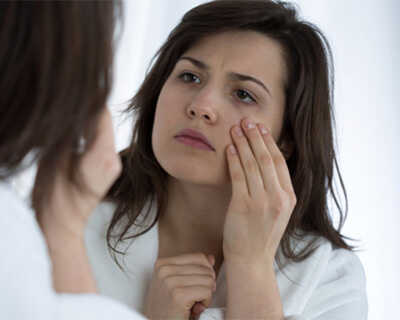Bags under eyes can mean different things. Loose skin, pockets of fat, pigmentation (change in skin color) and natural shadowing can all result in dark circles, a fatigued appearance, or “bags under your eyes.” Though these features can be inherited (passed down from parents) and seen in youth, they often get worse with age.
What Causes Bags under Eyes?
As we grow older, tissues around the eye gradually weaken and sag. This loss of skin tone allows fat to shift forward into the lower eyelids, making them look puffy and swollen. Fluid can also pool in this area and lead to edema (swelling) This can contribute to the puffy appearance.
Shadows may also appear under the eyes. They may be cast by swollen, puffy eyelids due to aging.
Other factors can contribute to eye bags, including:
- Not getting enough sleep
- Smoking tobacco
- Allergies
- Retaining fluid (often after waking up, or after eating salty food)
- Inheriting this condition (it can run in families)
While having bags or shadows under your eyes may give the appearance of fatigue, it is usually harmless. However, if swelling of the eye area is painful, itchy, red or does not go away, see your ophthalmologist.
What Can You Do for Eye Bags?
Home remedies for eye bags
Certain home remedies can help lessen or eliminate the puffiness of eye bags due to edema and the appearance of shadows. Below are some tips:
- Use a cool compress on your eyes. Wet a clean washcloth with cool water. Place the damp washcloth around your eyes for a few minutes, applying very gentle pressure. Do this while sitting upright.
- Make sure you get enough sleep. Most experts recommend seven to nine hours of sleep daily.
- Sleep with your head raised slightly. This can help keep fluid from settling around your eyes during sleep. Prop up the head of your bed a few inches, or simply add an extra pillow.
- Try to avoid drinking fluids before bed, and limit salt in your diet. That can help reduce fluid retention overnight that can lead to bags under your eyes.
- Quit smoking. Smoking can contribute to faster collagen loss. This makes the delicate skin under your eyes even thinner, leading to more visible blood vessels.
- Try to reduce your allergy symptoms and avoid excessive eyelid rubbing. Avoid the things that cause your allergies whenever you can. Talk to your doctor about allergy medications.
- Use cosmetics. Try using makeup concealer to cover shadows under your eyes.
Skin therapies for eye bags
There are a number of skin treatments to reduce bags under eyes. These include laser resurfacing, chemical peels and fillers. These treatments are designed to tighten skin, improve its tone, and reduce the appearance of bags under the eyes. Talk with your ophthalmologist if you want to learn more about these treatment options.
Eyelid surgery for bags under eyes
A type of eyelid surgery called blepharoplasty may help diminish bags under eyes, depending on their cause. During this outpatient procedure, the eye surgeon creates an incision under the lashes or inside the lower lid. The surgeon removes or repositions excess fat through the incision and sometimes removes extra skin, then closes the incisions with tiny stitches.
In addition to correcting bags under eyes, blepharoplasty can also repair baggy or puffy upper eyelids.
Talk with your ophthalmologist about the benefits, risks and side effects of eyelid surgery for eye bag removal.

Dark Circles vs. Shadows Under Eyes
Have you ever looked in the mirror after a long, sleepless night and discovered dark circles under your eyes? Chances are you probably saw shadows cast by puffy eyelids. Or those dark areas may be hollows under your eyes that develop as a normal part of aging. Shadows are not the same thing as true dark circles under eyes.
Here are some facts about dark circles under eyes:
- While anyone can have dark circles under eyes, elderly people are more likely to have it. Thanks to the loss of fat and collagen and thinning skin that comes with aging, the reddish-blue blood vessels under your eyes become more obvious.
- Dark under-eye circles are often inherited (called periorbital hyperpigmentation).
- People from ethnic groups with darker skin tones are more likely to have dark circles under their eyes.
- Hay fever and allergies can cause dark circles under eyes.
- For some people, exposure to the sun can make their body produce more melanin, the pigment that gives skin its color. This can lead to dark circles under eyes.
- Avoidance of sun exposure, treating allergies and not smoking can help. Additionally, the use of hydroquinone creams may lighten areas of increased pigmentation.
If you're concerned about the appearance of the skin under your eyes, see your ophthalmologist. They will be able to sort through the causes of the “bag or dark circle” and recommend the right treatment if needed.